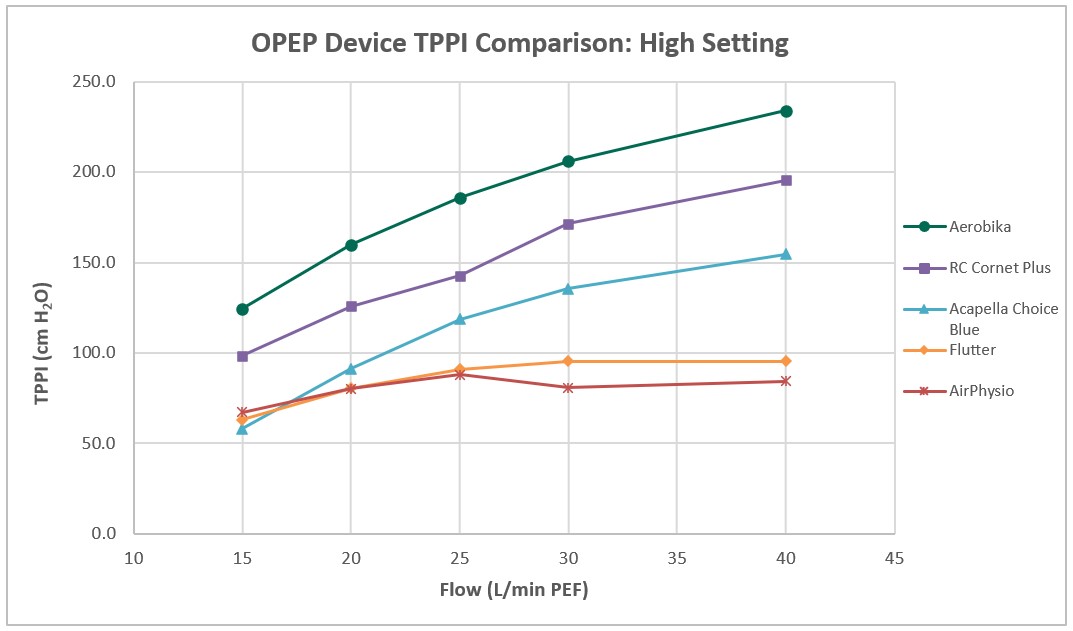Abstract
RATIONALE:
OPEP devices are used for airway clearance where excess mucus is a challenge, such as in bronchiectasis, CF and COPD. The mechanism of device action can differ greatly between different devices and therefore a clinically relevant laboratory metric such as the one utilised in this study can provide additional insights into likely differences in effectiveness.
METHODS:
Aerobika* (TMI), AirPhysio (AirPhysio), Flutter (Allergan), Acapella (ICU Medical) and RC Cornet Plus (Cegla) OPEP devices (n=3) were assessed at their highest resistance setting, utilising simulated OPEP expiratory breathing patterns at various different peak expiratory flows (PEFs), using a pressure wave generator. The total pressure pulse impact (TPPI), calculated as the sum of pressure pulse amplitudes for all discernable pulses (> 1.0 cm H2O) in a single exhalation, was determined for each pattern and each device.
RESULTS: see figure

DISCUSSION / CONCLUSIONS:
The different mechanisms of OPEP device function appear to significantly impact the extent to which the pressure pulses are generated. The Aerobika* OPEP device had the largest TPPI values at all PEFs, while the two devices with metal ball mechanism had the lowest.
Such differences highlight the risk of assuming that all devices will perform the same therapeutically and the importance of reviewing clinical efficacy and real-life usability.